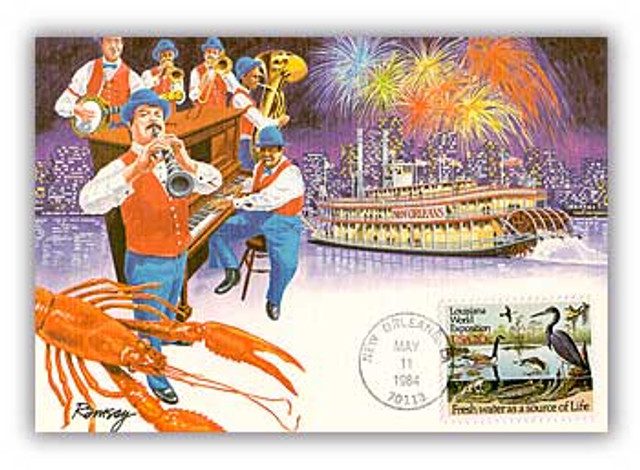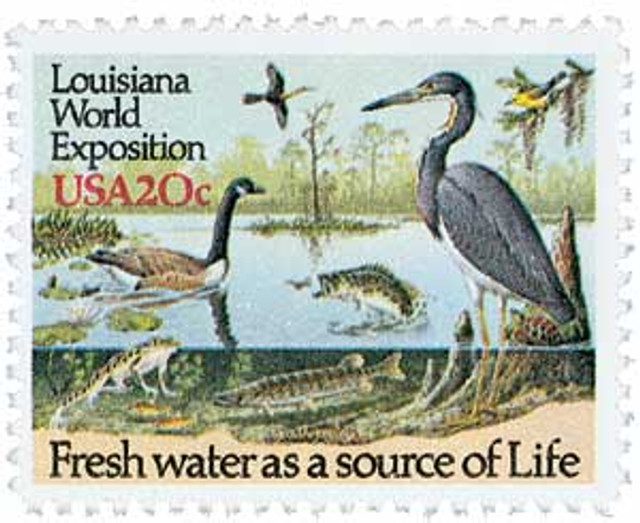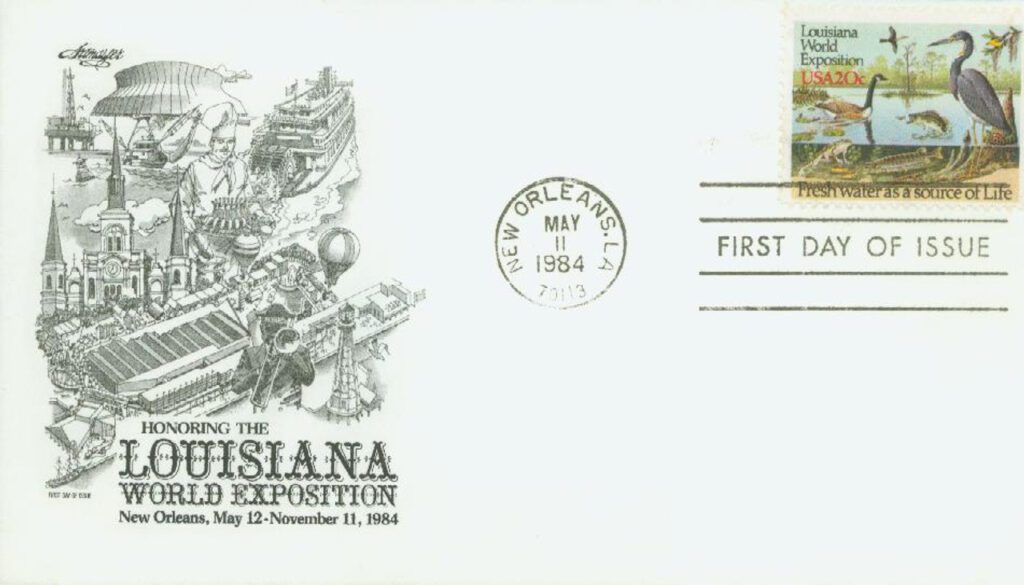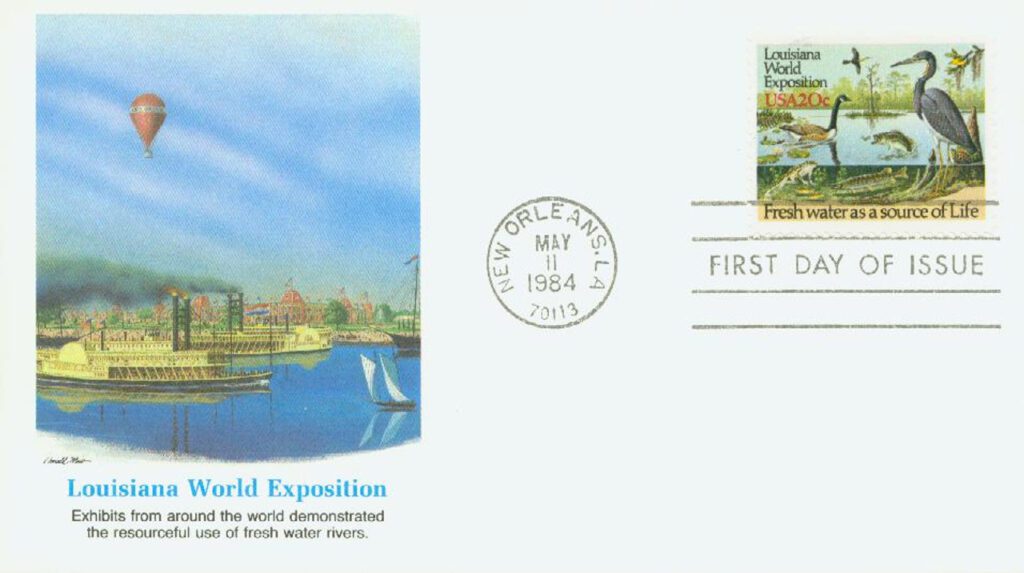On May 12, 1984, the Louisiana World Exposition opened its gates.
Classified as a “special category fair” by the International Bureau of Expositions in Paris, France, the exposition covered 84 acres of land in a former railroad yard. Its theme was “The World of Rivers: Fresh Water as a Source of Life.”
The state of Louisiana invested $5 million in the expo, much of which was spent clearing out rundown warehouses and replacing them with permanent structures that would remain in use after the fair closed. Twenty countries from around the world built exhibits for the fair, and most had an aquatic theme. The US built a 77,000-square-foot pavilion with a water theme and a 3,400-seat aquacade.
The fair officially opened to the public on May 12, 1984. US Commerce Secretary Malcolm Baldrige helped open the festivities on behalf of President Ronald Reagan. During the opening ceremony, Mayor Dutch Morial stated, “There will be no strangers at this far. Let the good times roll… Finally, it is here. We celebrate this fair as beneficial to the enjoyment of everyone.” The opening day festivities also included daytime fireworks and the release of 70,000 helium balloons.
One of the fair’s most popular attractions was the Mississippi Aerial River Transit, a gondola ride that ferried visitors across the Mississippi River. There was also the Wonderwall, a 2,400-foot long piece of architecture composed of towers, columns, busts, cupids, and animal sculptures.
Another interesting site was the Centennial Pavilions, a collection of gazebo-like pavilions that floated on a man-made lagoon. When viewed from the right angle, pavilions appeared to join together to form the main building of the 1884 Cotton Exposition that was held in New Orleans a century earlier.
Other popular sites from the fair included a visit from the space shuttle Enterprise, a monorail, and a Ferris wheel. The fair was also the first world’s exposition to have an official mascot, a pelican named Seymore D. Fair.

The fair closed on November 11, 1984. Though it had hosted more than 7 million visitors, it hadn’t made enough money to recoup the $350 million spent to put it on. To date, it’s the only exposition to declare bankruptcy during its run. Some blamed the low attendance on the fact that the fair was held just two years after the Knoxville World’s Fair. Additionally, the Summer Olympics were held in Los Angeles the same year. In spite of the financial troubles, the people of New Orleans remember the fair fondly, and many of the buildings remain and are used for other purposes today. In 2014, a commemorative plaque was unveiled in the heart of the location to commemorate the 30th anniversary of the fair.

A closer look at the stamp…
The 20¢ Louisiana World Expo stamp was issued on May 11, 1984 – the day before the expo opened. The International Trade Mart was the location for the First Day of Issue ceremony. The theme of the Expo, “The World of Rivers – Fresh Waters as a Source of Life,” is reflected in the design of the stamp. Artist Chuck Ripper created a southern bayou scene with some of its inhabitants. The stamp shows some of the many different creatures that depend on fresh water to live and must share its supply in order to survive. The birds pictured are the anhinga, prothonotary warbler, tricolor heron, and Canada goose. Some of the fish found in the bayou’s waters, such as the chain pickerel, largemouth bass, and the golden shiner can also be found on the stamp. In addition, a southern-leopard frog, southern-painted turtle, and Louisiana crayfish are depicted too.
Click here for photos and more from the expo.
| FREE printable This Day in History album pages Download a PDF of today’s article. Get a binder or other supplies to create your This Day in History album. |
Discover what else happened on This Day in History.





